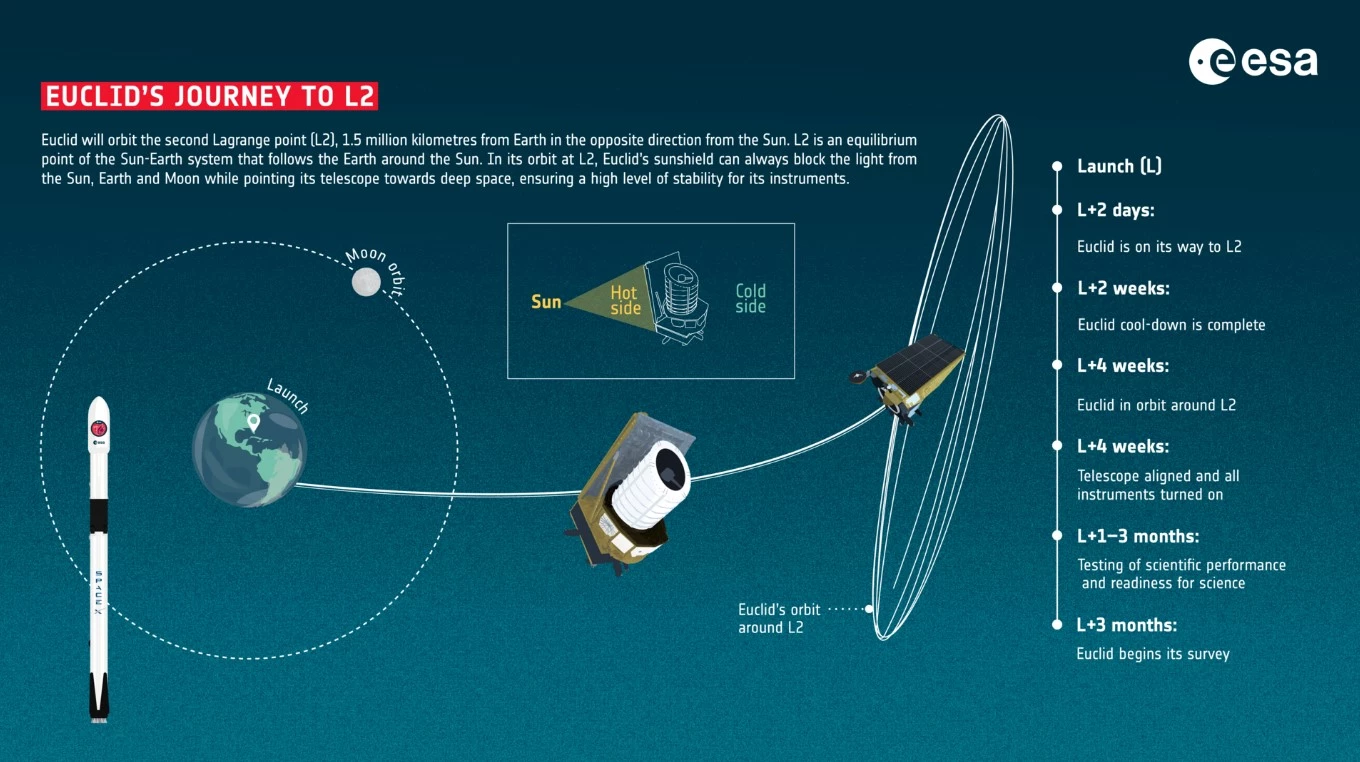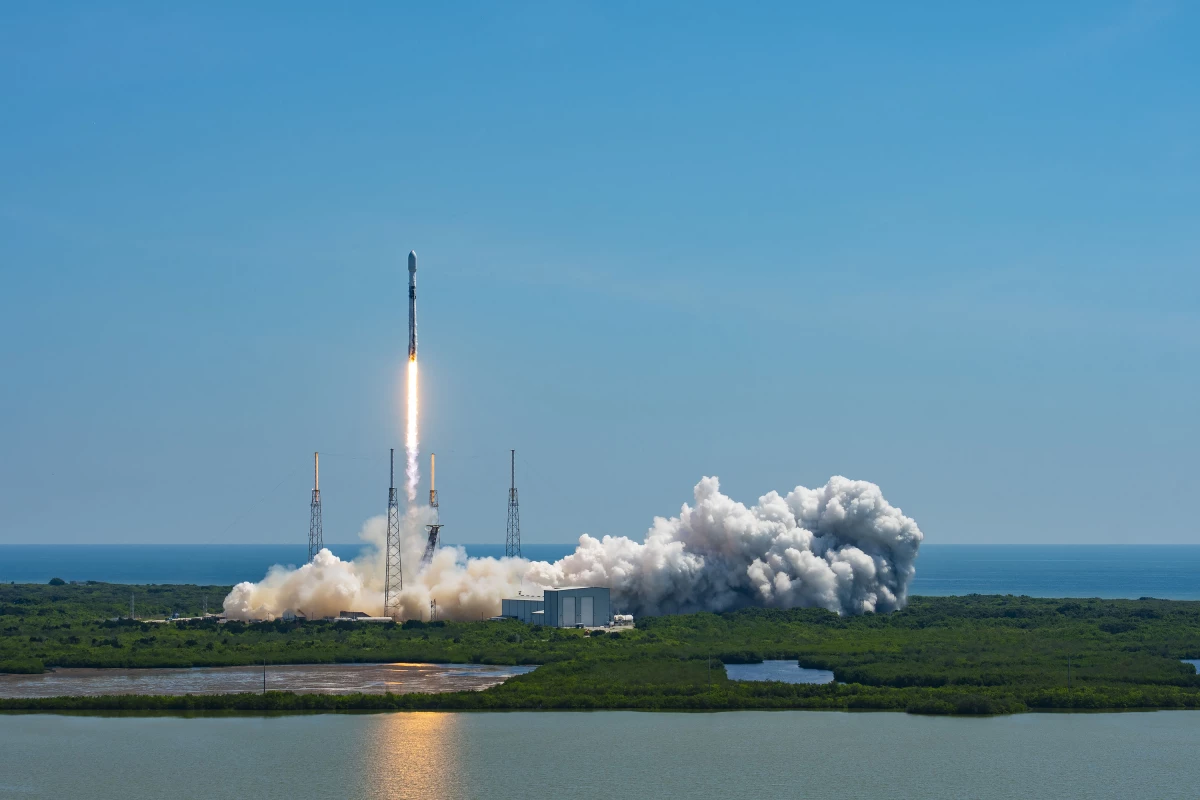ESA's Euclid mission to map the universe and learn more about dark energy and dark matter is on its way. On July 1, 2023 at 5:12 pm CEST the space telescope lifted off from Cape Canaveral Space Force Station in Florida atop a SpaceX Falcon 9 rocket.
Dark matter and dark energy are still hypothetical concepts but their existence would explain many very basic questions about the universe and how it formed. More importantly, these invisible, untouchable things make up most of the mass of the universe. However, learning anything at all about them is next to impossible because the only property of dark energy and dark matter that can be detected is their gravitational pull.
What this means is that dark matter and dark energy make up one of those very big questions that requires a very big answer. It requires mapping as much of the universe as possible to determine how much matter there is and how it is distributed, so that the amount and distribution of dark matter and dark energy can be deduced.

To find this answer, the Euclid spacecraft and a consortium of 2,000 scientists from more than 300 institutes across Europe, the US, Canada, and Japan that support it was established. The craft's key instruments behind the 1.2-m (3.9-ft) reflecting telescope aboard are the VISible-wavelength camera (VIS) and NASA's Near-Infrared Spectrometer and Photometer (NISP).
VIS is designed to take very sharp images of distant galaxies over the next six years while NISP analyzes them in the infrared spectrum to determine their distance by way of the Doppler effect caused by more distant objects shifting their spectra red-ward as they speed away from us - hopefully, it's nothing personal.
These instruments will result in enormous amounts of data that will be sent back to ESA’s European Space Operations Centre (ESOC) in Darmstadt, Germany by the space agency's recently upgraded Estrack network of deep space radio antennas. One of these at the New Norcia ground station in Australia made first contact with Euclid shortly after launch at 5:57 pm CEST.

The purpose of all this data collection is to make the largest and most detailed 3D map of the universe to a distance of 10 billion light years. By charting the shape, position, and movement of galaxies, it will be possible to determine the distribution of matter and work out how the universe expanded from which more can be inferred about the properties of dark matter and dark energy. Unfortunately, with the Milky Way galaxy so close by, Euclid will only be able to map one third of the distant sky.
Over the next four weeks, Euclid will travel to the Sun-Earth Lagrange point 2, 1.5 million km (one million miles) from Earth, where the gravitational pull of the Sun and the Earth balance one another out. Euclid won't visit this point, but will orbit around it in a manner similar to how it would circle a planet. As it travels, the instruments will cool down to cryogenic temperatures and the spacecraft will be thoroughly tested before it enters active service in three months.
"The successful launch of Euclid marks the beginning of a new scientific endeavor to help us answer one of the most compelling questions of modern science," said ESA Director General Josef Aschbacher. "Euclid has been made possible by ESA’s leadership, the effort and expertise of hundreds of European industrial and scientific institutions, and through collaboration with international partners. The quest to answer fundamental questions about our cosmos is what makes us human. And, often, it is what drives the progress of science and the development of powerful, far-reaching, new technologies. ESA is committed to expanding Europe’s ambitions and successes in space for future generations."
The video below recaps the launch of the Euclid mission.
Source: ESA







